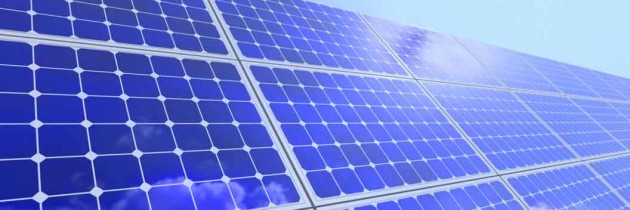Finkel review: renewable energy to face new security and reliability regulations
New security and reliability obligations will be imposed on power generators, and ageing plants will have to provide regulators with three years’ notice before they close, according to sweeping reforms proposed by Australia’s chief scientist.
In a briefing for state energy ministers on Thursday afternoon, ahead of the release of his final report to the Council of Australian Governments on Friday, Alan Finkel outlined the new regulatory regime and signalled he would recommend a new emissions reduction mechanism, to be called the clean energy target.
According to sources familiar with the final review, Finkel will propose that new generators be subject to specific security and reliability obligations to ensure renewable energy players can guarantee dispatchable generation around the clock, either through battery storage or by contracting back-up thermal power.
The new requirements will impose costs on the renewable energy sector. There will also be new, system-wide obligations across the national electricity market to ensure faster responses during natural disasters.
Finkel is also proposing that a clean energy target (CET) replace the current renewable energy target in 2019 or 2020. The chief scientist floated the idea in Thursday’s briefing that the CET threshold should be set at either 0.5, 0.6 or 0.7 tonnes of CO2 per megawatt hour.
Two weeks ago, in a briefing, Finkel is understood to have told state energy ministers that a CET and an emissions intensity trading scheme – a form of carbon trading for the electricity market ruled out by the Turnbull government – were more or less interchangeable in terms of their impact on power costs.
But Guardian Australia understands that in Thursday’s briefing, the modelling had been adjusted to suggest the CET had the lowest cost profile of all the potential policy options to provide investor certainty and lower carbon emissions.
Finkel told state ministers the CET was now his preferred option.
The report is understood to have modelled two scenarios – an emissions intensity trading scheme reducing electricity emissions by 28% on 2005 levels by 2030 and a CET scheme with the same target.
The modelling indicates the 28% target can be achieved by 2030, with net zero emissions from the electricity sector by 2070.But if the proposed target for electricity is only a 28% reduction, it begs the question how Australia will be able to meet its Paris target without significant emissions reductions in other parts of the economy.
Previous economic models indicate the electricity sector will need to to the bulk of the heavy lifting to achieve Australia’s Paris target.
The proposed CET works in practice as a technology-neutral RET and would allow gas generators and, potentially, high-efficiency coal into the mix.
The new system has been characterised as “all carrot, no stick” because it subsidises new, low-emissions technology without directly penalising carbon intensive energy sources.
It will also not impede state governments from conducting their own emissions reduction policies, such as reverse auctions.
Finkel also told state ministers on Thursday afternoon his reforms will include new demand management proposals, which would encourage energy users to consume power in off peak periods, reducing pressure on the network.
It will also include obligations to ensure the orderly closure of ageing thermal generators, preventing a repeat of the abrupt closure of Hazelwood power station – a development that has left the national electricity market exposed.
Power companies will be required to provide three years’ notice before closing down power plants.
The energy minister, Josh Frydenberg, has been working most of this week to prepare the ground for the policy change within the Coalition, with government conservatives restive on climate policy since Donald Trump’s decision to withdraw the US from the Paris climate accord.
Tony Abbott, who used an internal brawl about climate change and emissions trading to wrest the Liberal party leadership from Malcolm Turnbull in 2009, attempted to spoil the release of the report on Friday.
Abbott declared on Wednesday it would be a “big mistake” for the government to adopt a low-emissions target that knocked out new high-efficiency coal-fired power stations.
The CET being proposed by Finkel would technically allow coal in the mix and could also extend the life of existing power plants, by offering incentives for refurbishment for a transitional period, rather than closure.
Labor has signalled it is prepared to consider the Finkel recommendations in a spirit of bipartisanship. The opposition leader, Bill Shorten, said: “Australians want more from their political leaders than just the ongoing fighting and division over climate change.”
But Shorten said Labor would not be offering bipartisanship at any price. He said it was very important that the new policies include a “price signal on emissions.”
“If there is a price signal which ensures we get investment going forward into our new sustainable forms of energy, which doesn’t guarantee just repeated investment in new coal-fired power stations, then we think there’s a deal to be done,” Shorten said.
“We are prepared to work with Mr Turnbull to put a price signal on emissions, not to keep pretending we can keep investing in coal-fired power stations.
“We are prepared to work within the long-term national interest.”
Fonte: The Guardian



